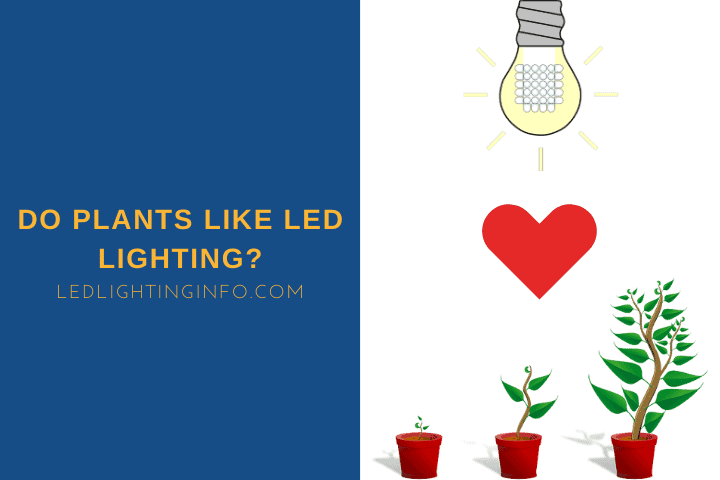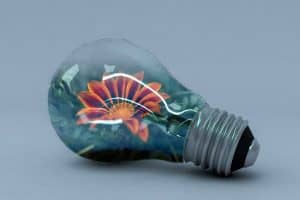Attention to everyone with a green thumb…
If you’re fond of fauna and love taking care of them, here’s an idea for you: grow them indoors!
Whether you’re looking to grow your food or build a pleasing landscape with roses, daisies, and begonias, growing indoors gives you more control over your results.
You can ‘play God’, so to speak, and exactly manage the elements affecting your plants. Water, wind, light, fertilizers, pests… all of this will be under your control instead of the random weather.
And when it comes to light, you can’t do better than LED.
Plants love the light LEDs give off. This is because LEDs can provide the optimum light wavelength for their current phase in life. Use Blue when plants are vegetating and use Red for when plants are fruiting.
Read on to learn why… in this article, you will learn:
- How LEDs help your plants to grow like the beanstalk in your children’s stories
- Where LEDs can be used and where it cannot be used
- Types of LEDs and how they affect your plants
So let’s get started. We’re going to cover how these semiconductors measure up to the almighty Sun…
Do LED Lights Support Plant Growth?
Plants need light for photosynthesis. Without enough light, they will be stunted in growth. Plants are not ‘choosy sunbathers, ‘ though.
They can get their light from any source, not just sunlight, as long as they get the perfect balance of wavelengths.
Again, the question is, will LED lights support plant growth? Or are they too weak to nurture good and healthy plants?
According to a study supported by NASA, LED lights are the best option for plants. Not only are they ‘thrifty’ with energy consumption, but they are also relatively cheap.
This is because of their long lifetime. But the great thing about LED lights is the ability to shine a specific wavelength. You can basically create a ‘diet’ of the optimum wavelengths for your plants.
Another interesting tidbit: the study goes on to show that Red plus Blue LED lighting is more energy-efficient than white LED lighting. This allows astronauts to eat more lettuce as they float around in space.
Cool, huh?
This information will be useful to you when you decide to grow your plants. Imagine waking up in the morning, lazily walking to your indoor garden with a cup of hot coffee in hand, and seeing your plants being bigger and more beautiful than the ones your neighbors grow.
It’ll be like an Olympic athlete who has a nutritionist, a coach, and a masseuse on his side to a yoga teacher who’s all about the ‘natural’ lifestyle. Both are, in truth, natural, but one uses scientific knowledge to fully realize his potential.
And soon, you’ll learn how you can give your plants a puberty-like growth spurt… just by choosing the right kind of light.
Can LED Help to Grow Aquarium Plants?
Before I teach you how you can make your plants grow like they’re on steroids, let’s talk about aquarium plants.
Underwater plants need light just as much as terrestrial plants. They need it to absorb the carbon dioxide that fish breathe out. But too much light can cause the growth of algae, which reduces light penetration.
So yes, the LED light can help to grow aquarium plants. As long as you find the right amount of light. The benefits are plenty. LED lights penetrate as deep as 24 inches in the water. Plus, they are, again, cheap to run.
And, another benefit is that the water takes on a beautiful effect from the colored lights. Light refracts along to the motion of the water, sparkles like diamonds on the scales of fish, and provides ambiance to the dancing plants.
If you have an aquarium, you can’t go wrong with LEDs because you’re going to get healthier plants and a more attractive aquarium.
What Kind of LED Light Helps To Grow Plants?
This is what you’ve been wanting to learn…
Here’s where LED light really shines. You can zone in on the wavelength of light that suits your plants and also somewhat take control of how your plants grow.
Here’s an example: from the time a plant sprouts out from its seed to the time it flowers, plants use photosynthesis to accumulate the resources needed for reproduction(the function of flowers and fruits). This stage of their lives is called the vegetative phase.
Blue light has been shown to benefit this part of their growth. Under the cold shine of blue, plants have been seen to grow lush leaves that grew at a rapid rate. Another benefit: blue light made them compact, saving the space you need for a vegetable garden.
Now, for the flowering phase, red light has been shown to improve reproductive growth.
Not only did it increase the yield of tomatoes from the experiment, but it also increased the vitamin C content in them! You’re getting more yield and healthier products too.
Orange light accelerates the growth of transplants. Green light promotes growth, reduces nitrate concentration, and has a positive effect on vitamin C concentration.
LED lights have really taken over the indoor gardening world. One crop where indoor gardening is preferred is the marijuana plant. This is all done legally, mind you. The reason they grow indoors is not for stealth but control.
Marijuana affects our state of mind because of the various cannabinoid content in their flowers. THC is the one that makes you stoned while CBD has been seen to reduce seizures, among other benefits. LED lights to give these growers the ability to control the cannabinoid content, giving the growers control over the type of yield they want to produce.
Okay, back to LED lighting…
Do White LED Light Has Any Effect On Plants?
Yes. While getting specific with light wavelengths has its benefits, scientists have found that the best results come from combining different light colors.
Two combinations stand out from what I’ve read in my studies. There’s Blue+Red and Mint White+Red.
As you’ve seen in the NASA study I shared above, Blue+Red seems to be their go-to choice because of the efficiency in energy used. But this study found that both combinations share the same effect on seedling growth.
Both were shown to have boosted plants’ growth. So that shows you that white LED lights do affect plants. But keep in mind that they are paired with red to achieve the same effect as Blue+Red.
Which Is Better Regular or LED Light For Plant Growth?
When I say regular lights, I’m referring to sunlight or incandescent light. So, how does LED stack up against them?
Let’s start with incandescents. Incandescents are very similar to sunlight in the sense that they provide the whole spectrum of the wavelengths. While that sounds like a good thing, like sunlight, incandescents also give off small amounts of Ultraviolet-B(UVB).
UVB can damage the cell membranes of plants. LEDs do not give off UVB (unless they’re specifically manufactured for that purpose).
Other reasons why you’re better off with LED is for the logistics of running them. Incandescents run HOT.
And if you run them for long periods, then you’re going to need a cooling system to keep things from burning up. Plus, you’re also racking up quite an amount on your utility bill.
So even if you’re new to this and prefer a ‘plug-in-and-leave-it’ kind of system, incandescents are not the way to go.
Besides the cost of running an incandescent system(and cooling it down), there’s also the disadvantage of not being able to selectively ‘feed’ your plants the light it needs at its current stage of life.
This lack of control feels restrictive to me. The whole point of an indoor garden is to gain control of the elements your plants are exposed to.
Final Words
I hope all this information convinces you to take a step towards building an indoor garden. You’re going to be able to really take control of your plants’ life cycle.
If you want to grow your food, you’ll have healthier and bigger yields with the help of blue, red, and white LED lights.
If you want to spruce up your home, an indoor garden brings a fresh and natural element. And white LED lights will allow you to do just that.
They also work for underwater plants. For fish enthusiasts out there, you can take your aquarium to the next level with colored lighting.
Lastly, they’re the cheapest option for indoor growing. You don’t need a colossal cooling system that incandescents demand nor the crazy amounts of electricity that incandescents consume.
What are you planning to grow in your home? I started with tomatoes and cucumbers because I wanted to grow my own food.
Do you want to learn more about how to make an indoor garden? Let me know down below. I’d be happy to share all my knowledge with you.
Looking for an LED bulb but not sure what type you need?
Check out my free bulb picker and select the right bulb within few clicks.



